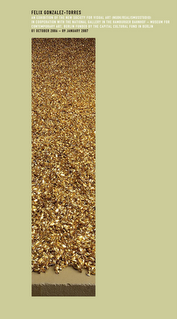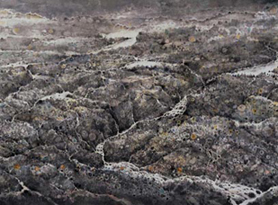Palazuelo, Pablo until 18.02.07 MACBA, Barcelona
 Pablo Palazuelo (1915) is one of the key figures of Spanish art of the second half of the 20th century, though unfortunately he has still not won the international recognition his work deserves. There are a number of reasons for that neglect. First, the still precarious situation of contemporary Spanish historiography. Second, an excessively linear notion of abstraction, which begins with Cézanne and Picasso, continues with constructivism and finally reaches minimalism. That orthodox conception of modern art has meant that other kinds of practices and aesthetics, which had to do with the symbolic, have been partly ignored. Palazuelo is one of the people affected in this way. The exhibition at MACBA, conceived as a retrospective, will be placing the emphasis on the more neglected aspects of his work.
Pablo Palazuelo (1915) is one of the key figures of Spanish art of the second half of the 20th century, though unfortunately he has still not won the international recognition his work deserves. There are a number of reasons for that neglect. First, the still precarious situation of contemporary Spanish historiography. Second, an excessively linear notion of abstraction, which begins with Cézanne and Picasso, continues with constructivism and finally reaches minimalism. That orthodox conception of modern art has meant that other kinds of practices and aesthetics, which had to do with the symbolic, have been partly ignored. Palazuelo is one of the people affected in this way. The exhibition at MACBA, conceived as a retrospective, will be placing the emphasis on the more neglected aspects of his work. Although he began his studies in architecture, from 1939 Palazuelo decided to devote himself entirely to painting. His work evolved towards abstraction, or non-figuration, as he himself considers that it should be called, and after 1946 he moved into a geometrical abstraction. In 1948 he obtained a grant from the French Institute in Madrid to study in France, which brought him into close contact with the French avantgarde, the new abstract works shown at Galerie Denise René (where he exhibited in a collective the same year), and he also met Eduardo Chillida, with whom he has kept up a close friendship.
Palazuelo conceives art as “a road to find a way out of human problems”. He makes continuous references to the history of painting, and the influence on his work of the notion of line in the work of Klee, which was a complete revelation to him, is particularly remarkable. He has also stated his interest in Russian constructivists like Gabo and Pevsner, though he rejects their scientific conception of geometry.
The drawings and gouaches are the seed of the canvases, “structures which, through a process of manipulation bring about metamorphic generations which form families”, in a biological way. The sculptures are the development of his two-dimensional forms in three dimensions.
Geometry is a central aspect of his work, because it is the measure of matter, the possibility of exploring it, understanding the process as an interaction between imagination and thought. He considers that all the forms we see are geometrical, “geometry is at the origin of life, which is the most inventive and endless thing we know. To have a vision of the structures that are contained in other structures, to see the new forms in potential, to see the possibilities of generating forms, to experience the passage of forms into others through metamorphosis, to see what grows like a plant. The geometrical forms I work with also develop through a very long metamorphic process or movement, and for that reason we can say that those forms are open and remain open and predisposed to transformation.”
Hence his interest in the skill and imagination with which graphic geometrical structures are handled in Arab art, or the correspondence between his work and musical composition, which can already be seen in the first drawings he did at the beginning of his time in Paris and which suggest musical notations to him when they are done, or the later series of drawings and gouaches done in 1978 in which those notations are now conscious. His is a work process based on a geometrical metamorphosis, radical, extreme, complex and, in his own words, in a slow tempo.
Colour, an element he introduces into his two-dimensional works, is not to be found in his sculptures: he does not need colour added to the sculpture, since the variety of metal materials provides him with the colour spaces he requires. In the painting, he imagines the colours before introducing them, saturating them, like symbols “of the deep dynamisms between psychic and material energy.”
In his work there is a major concern with the analysis of the structure, with the revelation of new needs, and the positive psychic sensations they produce in him. He does not seek to represent, but to collaborate in the act of the appearance. To his way of thinking, “that involves, on the part of the person looking at the work, a reading that can and must go beyond simple interpretation or formalist translation.” The imagination is a means of activating the hidden reality, which he also considers a real world, and an organ of knowledge.



